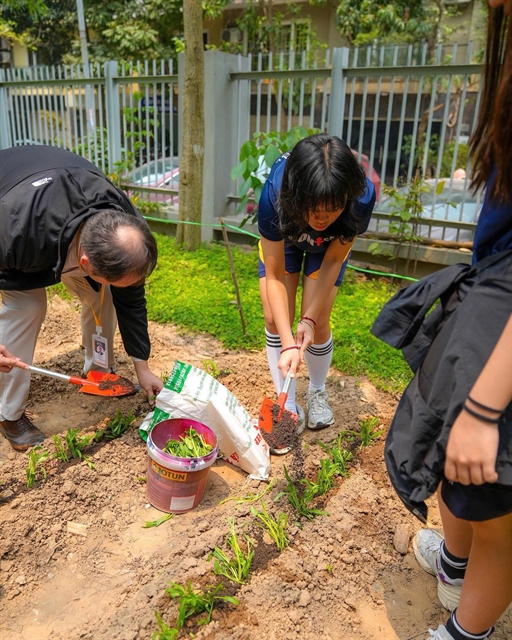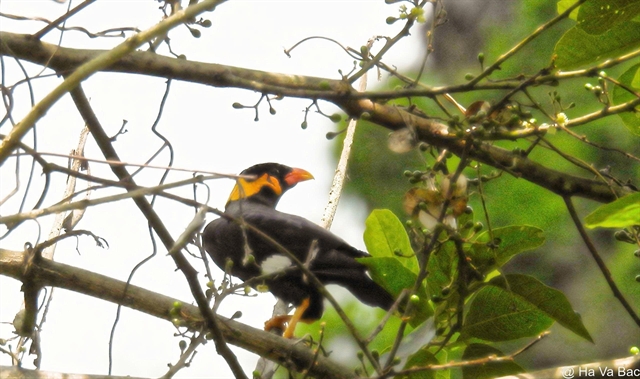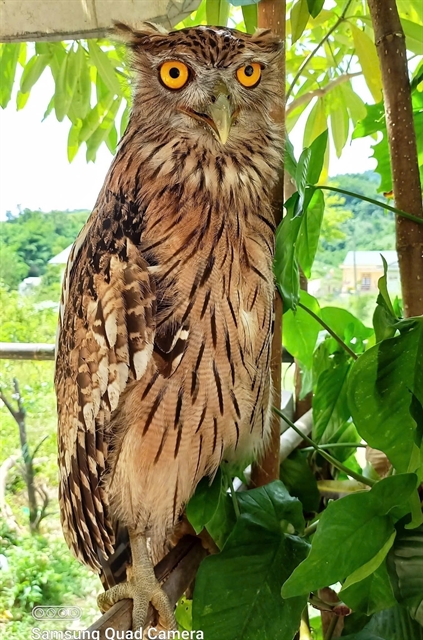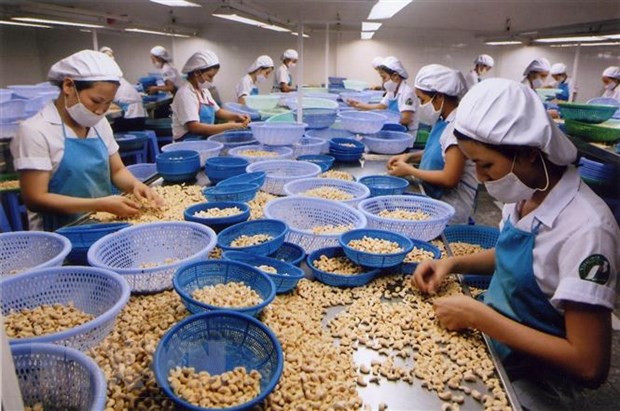 Environment
Environment

 |
| One of the rare yểng (Gracula religiosa) captured by a camera trap in the Đakrông Nature Reserve. — VNA/VNS Photos |
QUẢNG TRỊ — A recent biodiversity survey carried out through camera trapping and digital photography has discovered nine additional bird species, including two rare ones in the Đakrông Nature Reserve, according to the Nam Quảng Trị Special-Use Forest Management Board.
The newly recorded species include the Bách thanh đuôi dài (Lanius schach), Cành cạch núi (Ixos mcclellandii), Chào mào tai trắng (Pycnonotus taivanus), Chích chòe than (Oriental Magpie-Robin), Chim xanh lớn (Chloropsis cochinchinensis), Dù dì phương Đông (Ketupa zeylonensis orientalis), Họa mi đất mày trắng (White-browed Scimitar Babbler), Nhạn rừng trán trắng (Artamus superciliosus), and Yểng (Gracula religiosa).
These species hold high conservation value and play an important role in maintaining ecological balance in the forests. Notably, Ketupa zeylonensis orientalis and Gracula religiosa are classified as rare species.
 |
| A specimen of dù dì phương Đông (Ketupa zeylonensis orientalis) in Đakrông Nature Reserve. |
According to the Management Board, Đakrông Nature Reserve previously recorded 201 bird species across 43 families.
The addition of nine new species not only expands the biodiversity database but also highlights the effectiveness of applying science and technology in biodiversity monitoring. This provides an important basis for developing strategies to conserve, restore, and sustainably manage the special-use forest ecosystem.
Located in the central province of Quảng Trị, Đakrông Nature Reserve is one of Việt Nam’s four endemic bird areas and forms part of the Central Trường Sơn forest ecosystem.
The reserve is home to 1,576 plant species, 97 mammal species, 201 bird species, and 49 reptile and amphibian species, many of which are listed in the Việt Nam Red Data Book and the International Union for Conservation of Nature (IUCN) Red List. — VNS




